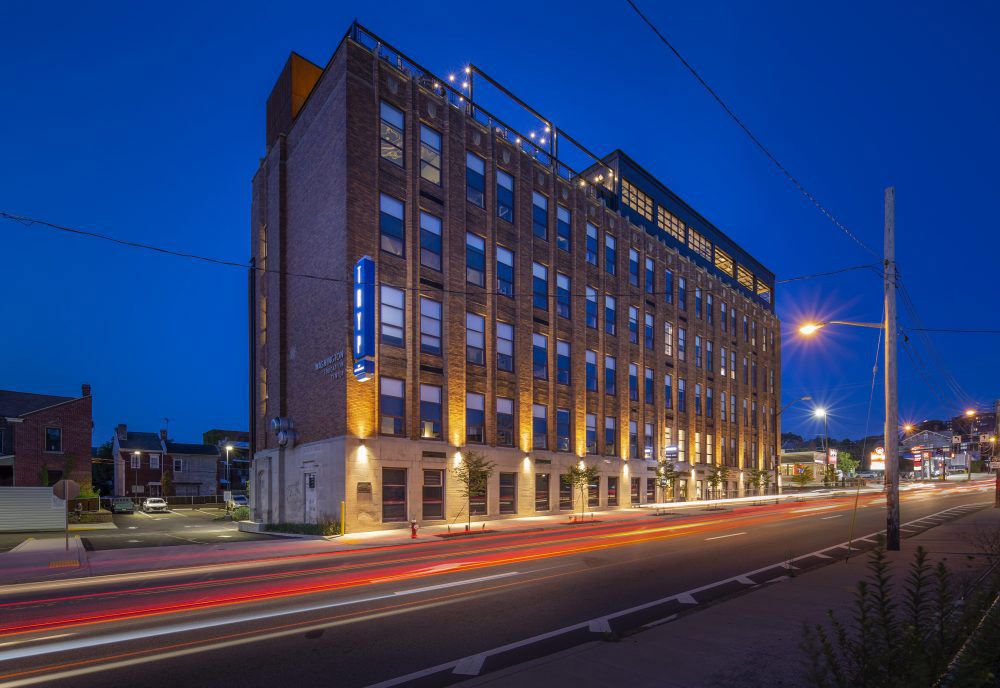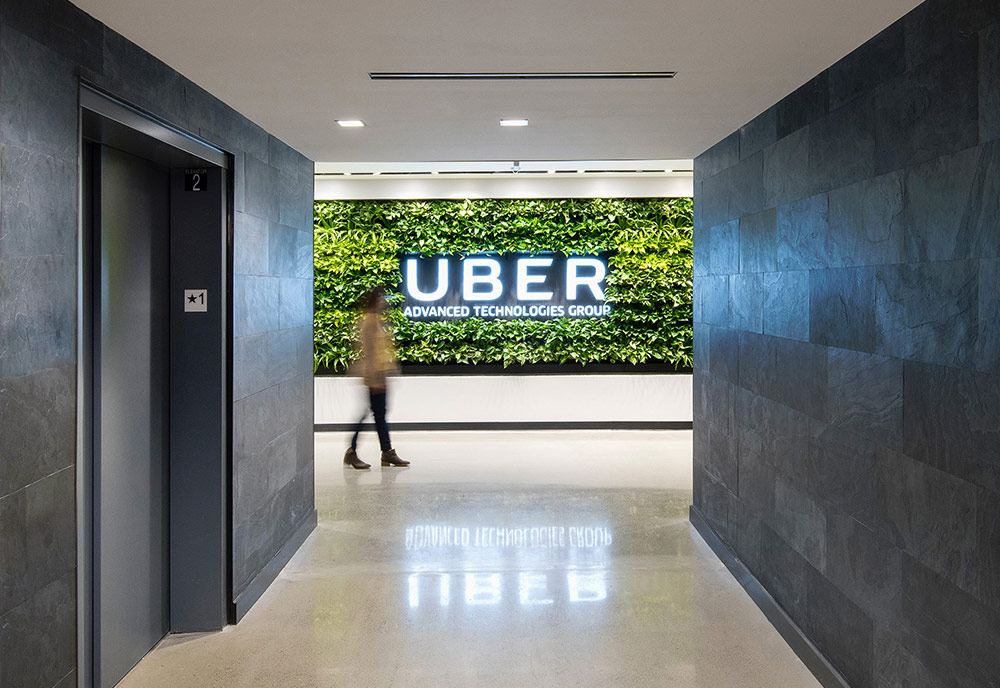Franjo Proudly Takes Part in Projects Nominated for AIA Pittsburgh’s Design Pittsburgh Competition
A brief look into the American Institute of Architects (or AIA)
History has revealed that many professional organizations have had small beginnings.
Not surprisingly, then, it was a group of only thirteen architects that met in the office of New York architect Richard Upjohn in 1857. Their goal: to form an organization to promote architects and architecture. That was the beginning of the American Institute of Architects (or AIA). Today, the association boasts nearly 94,000 members.
AIA works at the national, state, and local levels to create a business environment that’s favorable to firms focused on design.
On the national level, the association is engaged in a variety of activities important to architects and the architectural industry, including design matters, procurement, and improved project delivery and better codes for safer buildings.
As prime example, AIA has advocated for viable, up-to-date building codes that can help save lives and avert damage from disaster. The association’s role is to develop such codes and assist in their final adoption.
Among their proactive undertakings, AIA encouraged representatives in Congress to co-sponsor the Safe Building Code Incentive Act, which prompts states to use updated model codes and increase disaster relief assistance grants by four percent.
AIA also promotes the importance of small businesses. Over the years, AIA has helped defeat numerous tax hikes that would hurt architects, pushed for reforms to the tax code that treat small design firms fairly, and worked with agencies like the Small Business Administration to create an economic environment that allows members’ firms to grow. Their work continues to this day as they urge lawmakers to develop policies that recognize the unique needs of smaller firms.
A policy position especially important to AIA is the backing of student debt relief for architects. The association contends that emerging architectural professions currently face some of the highest student loan debts when compared with graduates in other professional fields.
Beyond tuition, additional costs exclusive to architecture, such as modeling materials, technical books, and specialized software only add to the debt burden. “In order for the profession of architecture to remain relevant,” says the AIA, “we need to ensure that our emerging professionals have every opportunity to gain experience, pay down their debt and find rewarding work in the architectural field.”
To that end, AIA advocates for the passage of the National Design Services Act that would authorize student loan debt relief for architectural school graduates who provide their services to communities in need through nonprofit community design centers. The program would not only reduce the burden of debt on emerging architectural professionals but would also bring quality design within reach for underprivileged communities.
Working for the community good
As we’ve witnessed far too often, natural disasters are wreaking havoc on coastal American cities and beyond. Each hurricane, wildfire, and tornado season brings more devastation than the year before. While architects can’t control Mother Nature, they can support in-need communities in numerous ways once disaster strikes. The AIA seeks to expand its Safety Assessment Program (SAP) in order to train more architects with the skills necessary to analyze buildings post-hurricane, windstorm, or flood.
Last August, the AIA launched its school safety initiative, calling for schools to receive more federal funding and grants for architectural and design services. The AIA also wants the government to help create a new public resource full of best practices and design guidelines for architects to use in order to mitigate violence in schools through well-thought design.
AIA’s Political Action Committee
ArchiPAC is the only federal political action committee (PAC) speaking up for members of the American Institute of Architects.
ArchiPAC’s mission is to support candidates running for the U.S. Senate and House who champion AIA’s initiatives to preserve the profession and promote positive solutions for the built environment. ArchiPAC is the political arm of the AIA, giving its members a stronger voice before the U.S. Senate and House and building power for architects.
AIA Pittsburgh
Among the association’s various local chapters is AIA Pittsburgh. The local group offers a variety of valuable services to its members, including continuing education, leadership development, knowledge networks, business tools and expertise, public policy advocacy, collaborations with design and construction industries, and student and public outreach, among others.
Among the chapter’s programs are Blueprint for Better: Pittsburgh where it aims to start a city-wide discussion about how buildings and spaces directly affect our communities and the people in them.
There’s also Target 2030, a program of the chapter’s Committee on the Environment to include presentations, tours and sketching by members of the design team to demonstrate environmental problems that are encountered, explored and solved through the design and construction process.
Two big annual events highlight the local association’s chapter, Build Pittsburgh and Design Pittsburgh. In addition, they support a variety of dynamic committees, from the aforementioned Committee on the Environment to the Young Architects Forum.
Build Pittsburgh, AIA Pittsburgh’s annual continuing education conference and exhibitor show, brings together a community of architects and built industry professionals to engage in institutional learning. The largest, best attended continuing education event in our region, Build Pittsburgh also provides an opportunity to interact, network, and connect with all aspects of the built industry. Typically, over 400 design/build professionals attend Build Pittsburgh.
AIA Pittsburgh is also especially proud to promote the Young Architects Forum that participates in the ACE High School Mentorship program and partners with students through AIAS at Carnie Mellon University and the University of Pittsburgh.
In addition, local members take part in AIA Pennsylvania’s Promoting Advocacy and Licensure through Mentorship Program that provides mentorship in a small-group atmosphere. Fifty-five participants, including students, emerging and established professionals, met three times to share experiences, advice and skills, and to discuss architectural issues.
Design Pittsburgh
Presented by AIA Pittsburgh, Design Pittsburgh is a celebration of architecture and design, and honors those who create it. A signature program of AIA Pittsburgh, it highlights outstanding architecture and design in the Pittsburgh area. Held each October, Design Pittsburgh features an architectural design exhibition, a juried Design Awards competition, a public voting opportunity for the coveted People’s Choice Award, a reception for more than 400 members, affiliates, design enthusiasts and guests, a VIP reception honoring the Gold Medal recipient and a ceremony recognizing winners of the prestigious AIA Pittsburgh’s Design Awards.
Design Pittsburgh seeks to raise the profile of architects as critical resources and industry experts in the Pittsburgh region. Through exhibits and events, the program provides excellent exposure of architects’ work to a wide variety of audiences, including potential customers. It highlights the importance of good design in the Pittsburgh region and how its members, sponsors, partners and the public support and promote the value of architecture and design in the places where they work, live and play.
This year’s Design Pittsburgh Awards ceremony will be held at the New Hazlett Theater followed by a reception at Nova Place, both part of Allegheny Center on the North Side on Thursday, October 3, 2019.
Franjo Construction’s Design Pittsburgh Nominations
Franjo Construction is honored to be a part of two of the nominated construction projects in the Design Pittsburgh Large award category, for projects that are over 50,000 square feet with a project completion date no more than five years old.
TRYP Pittsburgh/Lawrenceville Hotel
The first project is the TRYP Pittsburgh/Lawrenceville Hotel, set in the historic Washington Education Center Building at the base of the 40th Street Bridge. Steeped in neighborhood history and adorned with local art, the 108-room hotel is home to two restaurant concepts, a coffee bar and a wine shop, spectacular rooftop city and neighborhood views and two distinct event spaces for celebrations and events. TRYP Pittsburgh/Lawrenceville, a Windham property, is a local gathering space, just 3 minutes from downtown Pittsburgh, 30 minutes from Pittsburgh International Airport, in the heart of one of the city’s most celebrated art, dining and shopping districts.
Desmone Architects is the architectural firm for the TRYP hotel with Franjo Construction as the lead contractor.
Uber Advanced Technologies Building
The second project is the Uber Advanced Technologies Building where the architect is NEXT Architecture, with Franjo Construction again as the lead contractor.
Uber Advanced Technologies’ mission is to bring safe, reliable self-driving transportation to everyone, everywhere. For Uber, developing self-driving technology is one of the biggest technical challenges of our time. “If successful,” says Uber Advanced Technologies management, “these vehicles have the potential to make our roads safer and transportation more affordable for everyone.”
The intent of the project was for Uber Advanced Technologies to expand into the Crucible Building to provide a cutting-edge workspace environment that celebrated the history of the building they occupied and their own connection to the Pittsburgh region.
Franjo Construction has been a real pleasure to work with as a partner. The Crucible Building was a coordination challenge to say the least. They handled the on-site coordination with complete control and always did their best to maintain our design intent. A lessor superintendent could not have handled the job.
. . . NEXT Architecture
There is an opportunity for the public to vote for the coveted People’s Choice Award via the local chapter’s website.
If you’d like to vote for the projects Franjo was proud to be a part of, here is the link to the gallery of projects that can be voted on in the Large project category: http://aiapgh.org/architecture-large/.




